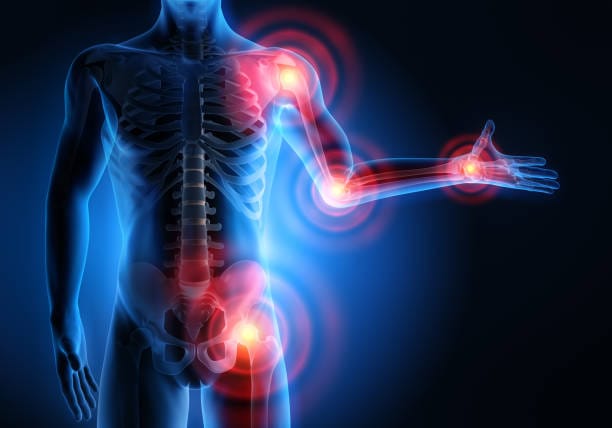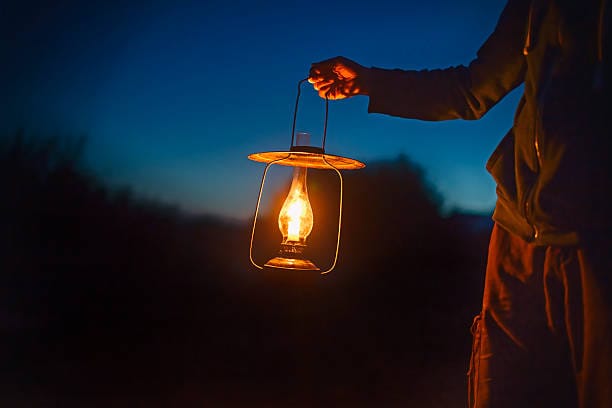- Dr Karan's Weekly Dose
- Posts
- 🌲🔦 Anti-Inflammatory Routine, GLP1 & The Dark Forest
🌲🔦 Anti-Inflammatory Routine, GLP1 & The Dark Forest
The Weekly Dose - Episode 167
My “Anti-Inflammatory” Protocol…

You’ve heard the word inflammation thrown around like confetti lately.
“Anti-inflammatory” diets, “inflammatory” foods, influencers promising to “balance inflammation.”
But what is inflammation, really? And what can you actually do about it without turning your life into a turmeric-and-sauna bootcamp?
Inflammation 101
Think of inflammation as your body’s built-in emergency crew. When you twist an ankle or get a virus, that swelling, redness, and heat is your immune system rushing to clean up the mess and start repairs.
That’s acute inflammation; short, helpful, necessary.
The problem starts when that fire never fully goes out. Chronic, low-grade inflammation is like leaving the pilot light on all the time: small, insidious and slowly damaging tissues from the inside out. Research now links it to heart disease, metabolic issues, cognitive decline, and even depression.
So yes, inflammation is real but it’s not a villain you can “detox” away in 48 hours… it’s biology responding to your environment.
Why “anti-inflammatory” is misunderstood
The internet treats inflammation like a single switch you can flick off.
In reality, it’s a network of things: your immune system, hormones, gut microbes, stress response, and sleep cycle all talking (or arguing) with each other.
That’s why the basics (boring as they sound) are still the strongest levers.
Here’s what the evidence consistently supports:
1. Eat to give your cells a long life
An anti-inflammatory diet isn’t a list of superfoods… it’s a dietary pattern over a long period of time: fibre-rich plants, omega-3s, colourful produce, herbs, and polyphenols.
30 g+ of fibre/day (your microbes turn it into anti-inflammatory short-chain fatty acids)
Extra-virgin olive oil, oily fish, nuts, seeds
Turmeric, rosemary, cinnamon for immune modulation (most herbs and spices)
Dial down ultra-processed snacks, refined carbs, and sugar-sweetened drinks.
If you like labels, the “Mediterranean” diet still has the best evidence for lowering inflammatory markers like CRP and IL-6.
2. Reduce invisible irritants
We can’t live in a bubble, but we can make it less toxic.
Emerging data shows microplastics and airborne pollutants can trigger immune responses and oxidative stress.
Simple swaps help: use glass instead of plastic for hot food and avoid reheating leftovers in takeaway tubs.
3. Move often, not perfectly
You don’t need to train for a triathlon… your immune cells respond even to 20 minutes of brisk walking.
Exercise releases myokines: tiny anti-inflammatory molecules that literally tell the immune system to chill.
4. Stress less (or at least stress smarter)
Your nervous and immune systems share a hotline. Chronic stress keeps the line permanently buzzing, raising cortisol and inflammatory cytokines.
The fix doesn’t have to be meditation on a mountain: try breath work, journalling, Lego building (seriously lol), comedy, or time outdoors.
5. Sleep like it’s medicine
One night of poor sleep can raise inflammatory markers the next day.
Good sleep is your body’s nightly audit… clearing damaged cells and calming immune activity.
Aim for 7–9 hours, a fixed wake-up/sleep time, and a wind-down routine that actually winds you down (screens don’t count).
6. Heat helps (and weirdly enough can down the internal “heat”)
Cold plunges are trendy, but for long-term inflammation, heat has stronger evidence.
Regular sauna use is linked to lower cardiovascular and inflammatory risk.
You don’t need a dozen supplements or a Himalayan mud cleanse. You need steady inputs that let your immune system turn the fire on and off when needed.
In the end, the best anti-inflammatory protocol looks boring on paper:
Eat real food (especially fibre and omega-3s)
Move daily
Manage stress
Sleep properly
Heat
Do those consistently and your “protocol” becomes a lifestyle.
P.S. Most chronic inflammation starts in the microbiome and one of the simplest, most evidence-backed ways to improve gut health is to increase soluble fiber.
That’s exactly why I built LOAM, our multi-fiber prebiotic blend that delivers 10 g of fermentable fibre from six clinically profiled sources in one clear, gut-friendly scoop.
It’s science-first, tested for purity and designed to feed your good bacteria. You can grab it here to build your foundation from the inside out:
P.P.S If you’re ordering from the USA feel free to use the code WAITLIST25 and if you’re ordering the quarterly bundle as an international customer use the code SHIP25… both give you an extra 25% off and expire in the next 48 hours so grab it while you can!
GLP-1s & Colon Cancer

Something interesting is emerging about these drugs and it might be doing more than helping people lose weight.
A new study from the University of California looked at nearly 7,000 people with colon cancer and found that those taking GLP-1 medications were less than half as likely to die within five years compared with those who didn’t take them.
The benefit was strongest in people with severe obesity (BMI > 35), which makes sense because obesity itself drives metabolic dysfunction, insulin resistance, and low-grade inflammation… all key ingredients in the cancer recipe.
Before you sprint to the pharmacy, a caveat: this was an observational study. It shows correlation, not causation. The improved survival could come from the drug… or simply from the better metabolic health that comes with weight loss, lower insulin, and improved inflammation markers.
Still, it hints at something powerful: if you fix metabolism, you may also improve cancer outcomes.
What GLP-1s actually do
GLP-1 stands for glucagon-like peptide-1; a hormone naturally produced in your gut after you eat.
It slows stomach emptying, helps you feel full, improves insulin sensitivity, and communicates with appetite and reward centers in your brain.
In drug form, it mimics that signal… making it easier to stick to healthy habits.
But GLP-1s aren’t just about calories; they influence the entire gut-brain-immune loop.
They reduce post-meal inflammation, improve endothelial (blood-vessel) health, and may even affect cancer-related pathways like oxidative stress and cell proliferation.
So…can you boost your own GLP-1 without a prescription?
How to support your natural GLP-1
The science is clear: you can raise baseline GLP-1 activity through food, movement, and sleep (not equivalent to the drug however!)
High soluble fibre, especially slow-fermenting types.
Fibres like the ones found in complex carbs like wheat, barley, beans, corn and grains and root vegetables feed gut microbes that produce short-chain fatty acids (SCFAs). SCFAs directly stimulate GLP-1-secreting L-cells in the colonPrioritise protein at every meal.
Protein triggers GLP-1 and PYY release while stabilising blood sugar.Sleep properly.
Even one bad night blunts GLP-1 response and spikes ghrelin (your hunger hormone). Sleep = natural appetite control.Move daily.
Exercise increases GLP-1 receptor sensitivity and lowers inflammation; a double win.
These habits don’t match the rapid appetite suppression of an injection, but they train your biology to work as it should.
Beyond hormones; colon cancer prevention 101
Whether you use GLP-1s or not, the fundamentals of colon-cancer risk reduction haven’t changed… they’ve just been neglected in favour of shiny new pharmacology.
Here’s what’s still non-negotiable:
Quit smoking. Tobacco metabolites damage colon lining and DNA repair mechanisms.
Drink less alcohol. Even moderate intake raises colorectal-cancer risk ~15 % per extra 20 g/day (≈ two glasses of wine).
Eat more fibre. ≥ 30 g/day can lower risk by 15–25 %.
Cut down ultra-processed meat. Nitrosamines and excess haem iron drive inflammation and oxidative stress in the colon.
Get enough dietary calcium (≥ 300 mg/day). Calcium binds bile acids and free fatty acids in the colon, forming harmless “soaps” that reduce lining damage.
Do your screenings. Colonoscopy or stool-DNA testing starting at 45–50 (or earlier if family history). Early detection saves lives.
GLP-1s may become a new frontier in metabolic oncology… treating the terrain, not just the tumour. But for most of us, the same levers still matter: fibre, protein, movement, sleep, and moderation.
P.S If you want to learn more in depth about weight loss, GLP-1s with zero jargon and no judgement… I go deeper into these and other “taboo” topics in my upcoming book “This Is Vital Information”:
As an added bonus, I’ll be throwing in a live virtual event an Q+A for anyone who pre-orders the hardcover!
To get the bonuses, simply pre-order This Is Vital Information and upload your receipt to this link:
Quick interlude: If you think The Weekly Dose is cool 😎, share this newsletter on socials, mention it in your newsletter, and/or hit forward to your health-curious friends, family, and that one fiendish coworker who loves learning about health stuff.
Reminder: This newsletter is free, always will be and I send it out every Sunday to give you in-depth insights into the health topics!
Things I Wish I Knew Before My 30s…

The lantern principle
Here’s a nice story to round up the email. Sit back and relax!
Imagine a traveller walking through a vast forest at night.
The trees rise like ancient monuments, the darkness thick enough to feel. The traveller is tired, cold, and overwhelmed by the sheer scale of the journey ahead.
He carries only a small lantern… a faint, flickering light barely stronger than a candle flame.
At one point, as he stares into the endless darkness, he mutters to himself:
“What’s the point? This tiny light can’t possibly get me through the whole forest.”
But he takes a step, then another and another…
Every time the lantern moves forward, a little more of the path reveals itself.
Still not the whole forest… just the few metres he needs.
Hours later, the traveller emerges at the forest’s edge, dawn breaking over the horizon.
He looks back and realises something…
He never needed a floodlight. He only needed the courage to use the small light he had…over and over again.
Modern neuroscience shows that the brain is not built for large leaps. It is built for incremental progress.
Tiny actions trigger tiny dopamine releases. Not huge fireworks… just small sparks of “keep going.”
Those sparks wire new pathways through synaptic plasticity.
Over time, the pathways strengthen, making the behaviour easier, more automatic…
The geeky phrase for this habit building is “long-term potentiation.”
In real life, it’s how every meaningful transformation actually happens. You rarely notice the change in real time but the brain notices.
The dark forest illusion
One of the most common cognitive distortions we all fall into is something psychologists call catastrophic scaling (guilty)... the belief that if we cannot solve the entire problem immediately, the small action is pointless.
“One workout won’t change anything.”
“One healthier meal is meaningless.”
“One difficult conversation won’t fix the relationship.”
“One minute of meditation can’t possibly calm my mind.”
But this is the dark forest illusion: you’re measuring the lantern by the size of the forest, not the size of the next step.
In reality, it is the tiny, seemingly-insignificant behaviours… repeated, reinforced, and stacked that become a life.
You don’t need to see the whole path just try to honour the next step.
I know small changes may not feel powerful or transformative… they may not even feel noticeable! However… like the traveller’s lantern, they accumulate almost imperceptibly until one day you look back and realise: those “little” things weren’t little.
They were the mechanism of change.
A practical reflection for your week
If life feels overwhelming… and I don’t know about you but my year has been chaos…. try shrinking the forest.
If you can’t change the whole day, change the next 10 minutes and if you can’t build the perfect habit, do the imperfect version.
Your brain won’t reward the scale of the action… it rewards the consistency.
Let the lantern do its job and you’ll be astonished by how much it lights.
Have a good bloody week my beautiful sentient microbe hoarders!
👋 Who are you again? I’m Karan Rajan - a doctor and curious explorer of all things health and wellness. I host the Dr Karan Explores Podcast and have written two books "This Book May Save Your Life" and "This Is Vital Information" (you can pre-order it now!) and have just founded a microbiome company, LOAM Science to create the best fiber product in the world!
Every Sunday, I share 3 interesting things about health, life and science to make your life easier, healthier and happier. (Disclaimer: I’m more your friend with health benefits. None of this is medical advice.)
And oh, you if also feel strongly about some health things or just want to say hi? Hit reply... I’d love to hear it and hear from you! (yes I read every reply!!!)
Oh and before you wiggle away until next Sunday… here’s the subscribe link to my newsletter if you fancied sharing it with a friend, family member or your arch nemesis!


